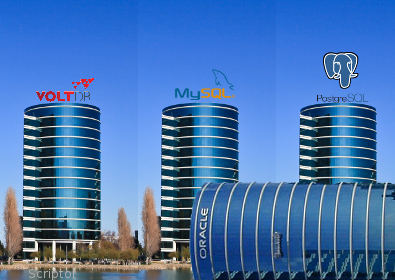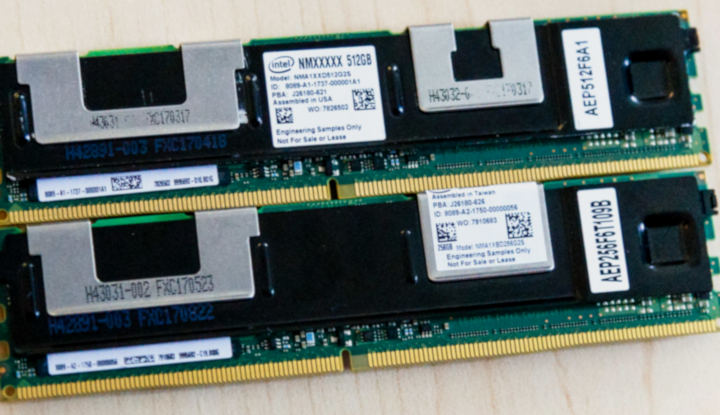VoltDB makes Oracle obsolete
The database landscape is shocked by the popularization of computers with 16 gigabytes of memory or more. Now you can place wide databases there .
This led to developers developing custom software for this new hardware, including SAP's Hana and VoltDB. The second exists in both commercial and free versions - the licensed community publication Affero GPL.

Oracle is well aware of the threat and is trying to develop technologies to run its software in memory, but they cannot provide the same performance as a tool designed specifically for this.
Innovation into innovation
VoltDB is the latest project by Michael Stonebraker to multiply database creations. Participated in the development of Ingres (1983), Postgre (1989), which is based on Ingres and became PostgreSQL in 1997, after being completely redefined. He founded other projects designed for special use of databases, such as StreamBase (2003), Vertica (2005).
So it is the comic specialist and innovator that underlies VoltDB. It is also a criticism of the NoSQL movement another evolution of the domain, in which it chides the risk of using low-lying languages to speed up processing.
He prefers the NewSQL movement, which changes the way databases work, but still focuses on the SQL language.
He sees a future where users are analysts and academics, waiting for intelligent processing databases to answer questions asking business management. For example, a supermarket that provides for its supply depending on the weather and various social factors, and not from replacing stocks depending on their depletion. You will now use lists instead of row and column tables.
Facebook already faces a challenge with its classic relational database design. The site should manage proximity between users not geographically, but in terms of proximity and relationships. If we update the relationship between the two users, it will mean an impact on thousands of others. One deal implies another thousand. It is clear that you need a database designed differently, and in fact the firm is multiplying the experience to try to develop this software.
InRAM no sectors
Conventional DBMSs were developed at a time when computers had small live memories of no more than a few megabytes, and data records were sent directly to the hard drive. This system was improved with tampons and various fireworks, but without changing the base structure. It is a store of rows added one by one and converted to sectors on hard drives. VoltDB completely got rid of this model.
VoltDB is a commercial version of the H-Store project developed jointly by MIT, Carnegie Mellon, Yale and other universities and in which Michael Stonebraker participated. This is a NewSQL framework that preserves the SQL language, but with parallel work in memory. The base is divided into several sections and each of them is entrusted with a handler that performs transactions one by one. There is no lock and no delays in the system.

Intel Optane-based DIMMs
VoltDB is written in Java, which should not console Oracle, the owner of the language. Procedures written in this language constitute units of transaction. Saving data, while all changes are made to memory, is ensured by storing on the hard disk at intervals of the database state. The sequence of transactions made during recording is stored and executed asynchronously after storage is complete. Since all transactions on one section are made in succession, it is easy to execute them in shifts .
Oracle is outdated
Oracle code, like other industry entities, is a legacy of the past. The software was fully designed to run on a hard drive. It allows dozens of transactions per second, but a system designed to run in memory executes tens of thousands. Therefore, users are going to abandon Oracle and turn to new solutions that provide both faster speed and a different way to manage data to get information about data arrays.
Oracle must create a new database if the firm wants to remain competitive, but it no longer has an advantage over competitors. Its widespread adoption in enterprises can be a disability, forcing it to maintain compatibility with existing applications. And if it is linked to the costs of competition using NewSQL software, then it devours itself.
Among such competitors is Facebook. Given the number of servers, it is unlikely to buy VoltDB licenses, nor will it buy Oracle licenses. But nothing prevents her from developing her own H-Store-based solution, the code of which is open source, as she developed Cassandra from Google's BigTable model, another possible competitor. There is also a free version of VoltDB that has yet to be evaluated.
Updated 27 November 2015
Samsung is announcing mass production of 128GB DDR4 DRAM memory. Since they can be assembled into several slots on the server, getting to a terabyte becomes easy and, therefore, allows you to save an impressive database in memory.
Updated September 23, 2022
Intel abandoned the Optane/3D XPoint non-volatile memory technology, which allowed one comic to be stored in memory, but replaced it with another, CXL (Compute Express Link), which allows you to connect volatile or volatile memory to the processor using an accelerated protocol using cache memory.
Resources